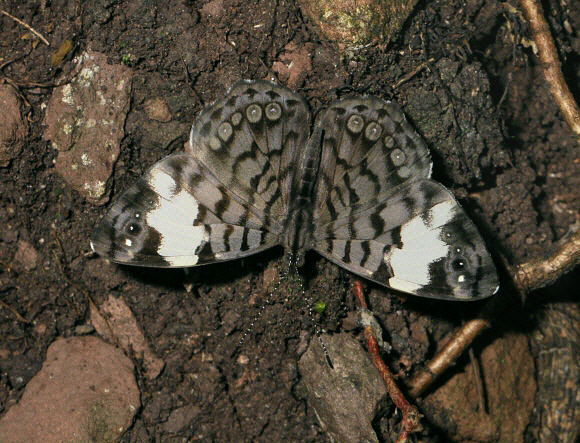 Ectima thecla peruviana, Catarata Bayoz, La Merced, Peru – Adrian Hoskins
Ectima thecla peruviana, Catarata Bayoz, La Merced, Peru – Adrian Hoskins
Introduction
The Biblidinae are known for their diverse but simple and often colourful patterns. In the neotropics their representatives include the Ageroniina – a subtribe which includes the Hamadryas Crackers, the Ectima Banners, the Panacea Flashers and the Painted Beauty Batesia hypochlora.
Ectima and Hamadryas have much in common, not least their habit of basking head-downwards on tree trunks with their wings held flattened against the bark. In common with the females of most Hamadryas species, Ectima have a white diagonal band across the forewings, but Hamadryas are larger, and have very intricate calico patterns on the upper surface, unlike the much plainer Ectima.
There are 4 Ectima species – erycinoides from Central America, thecla from southern Amazonia, lirides from Peru and Bolivia, and iona which is distributed from Colombia to the Mato Grosso.
Habitats
This species inhabits rainforest at altitudes between about 100-1000m.
Lifecycle
The eggs are white and laid singly on the leaves of Dalechampia and other Euphorbiaceae. The fully grown larva is black and covered with branched spines.
Adult behaviour
The butterflies are usually encountered as singletons basking head-downwards on tree trunks in the characteristic Hamadryas / Ectima fashion. They normally bask at a height of about 4 metres but can be enticed lower down by applying liquefied plantain or shrimp paste to trunks at eye-level.

Ectima thecla peruviana, Catarata Bayoz, La Merced, Peru – Adrian Hoskins
